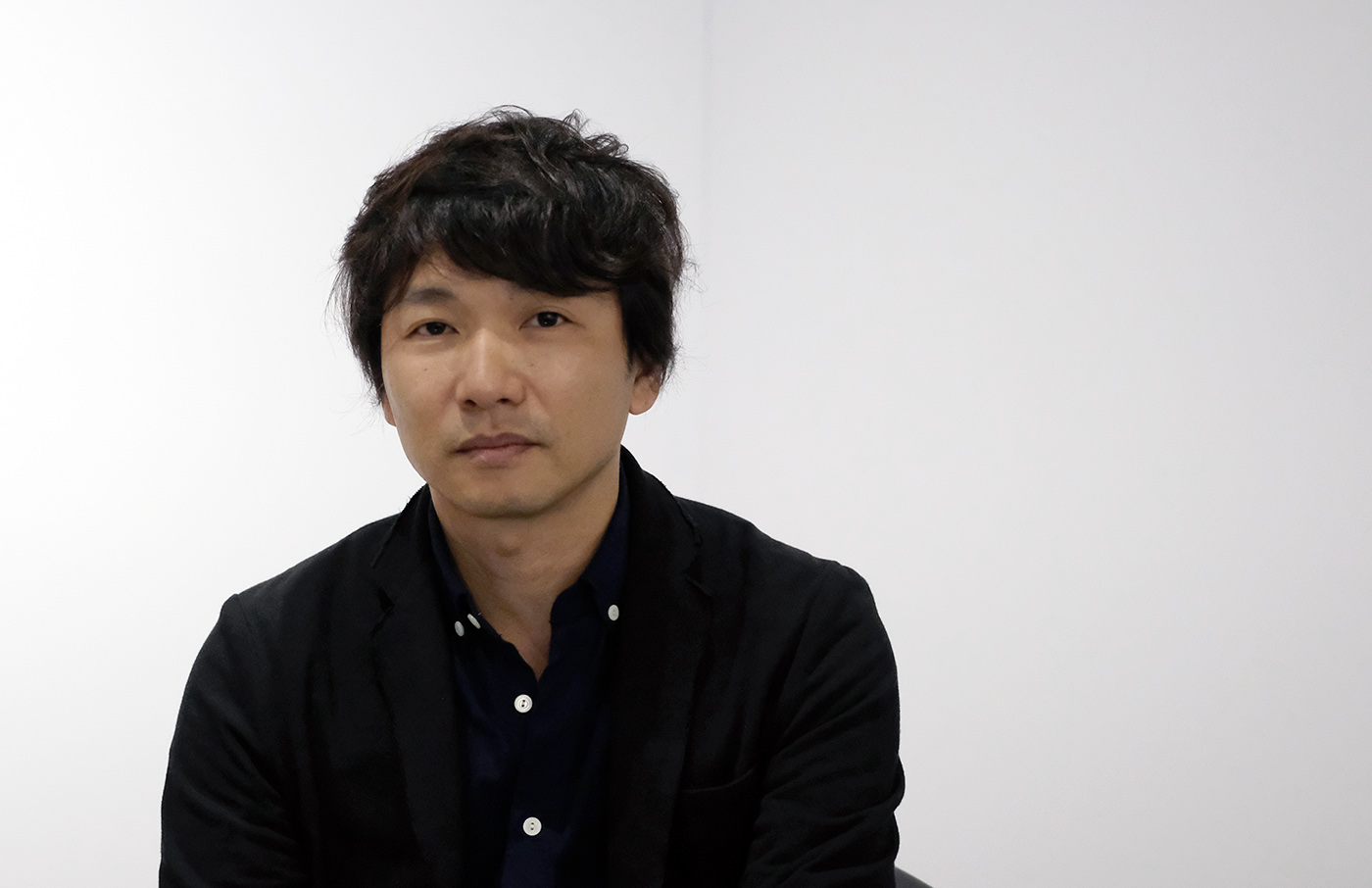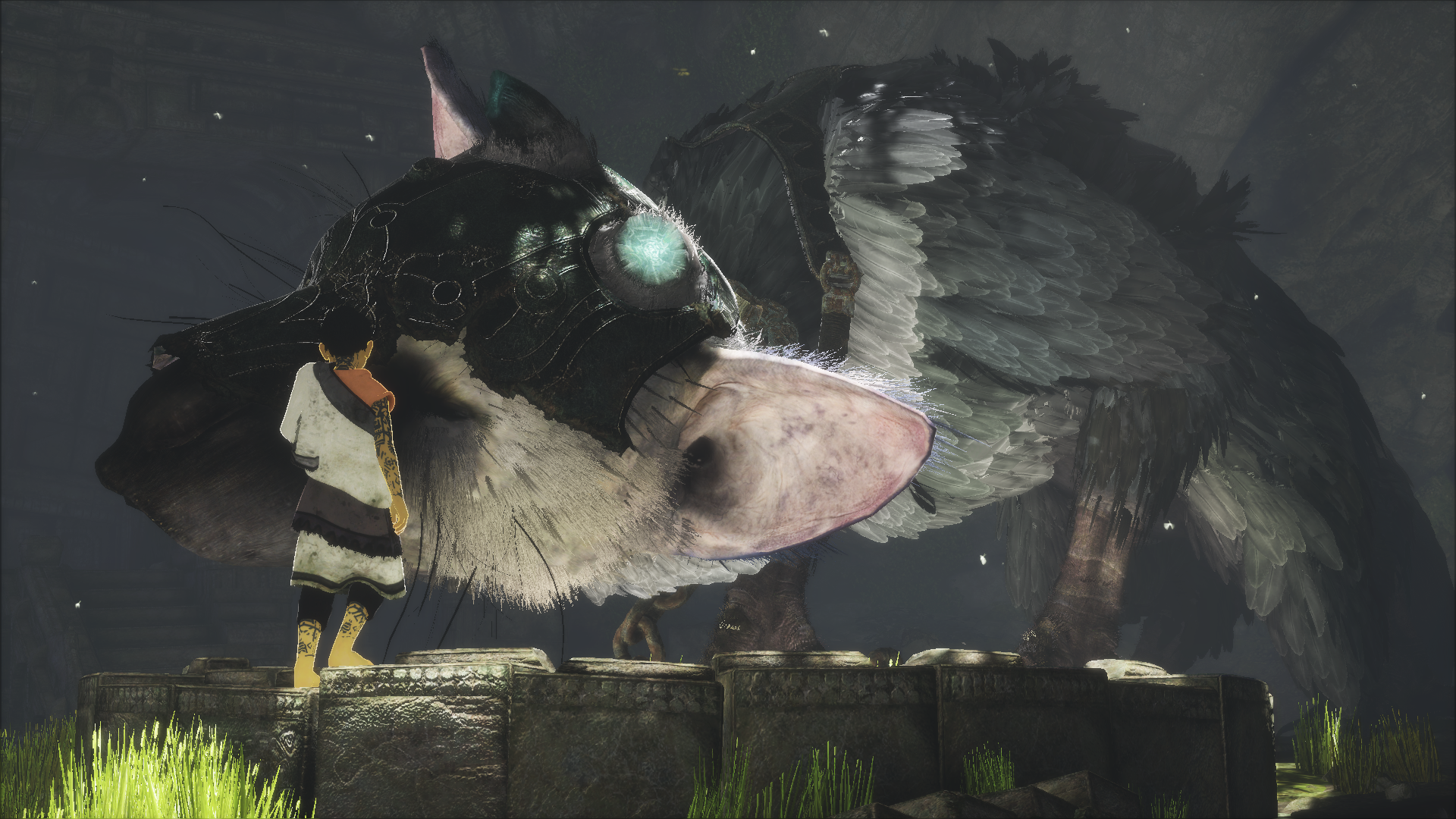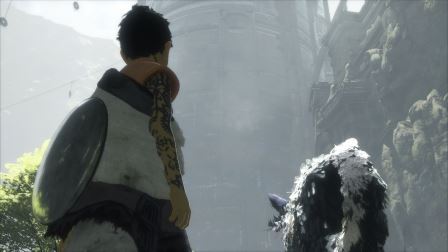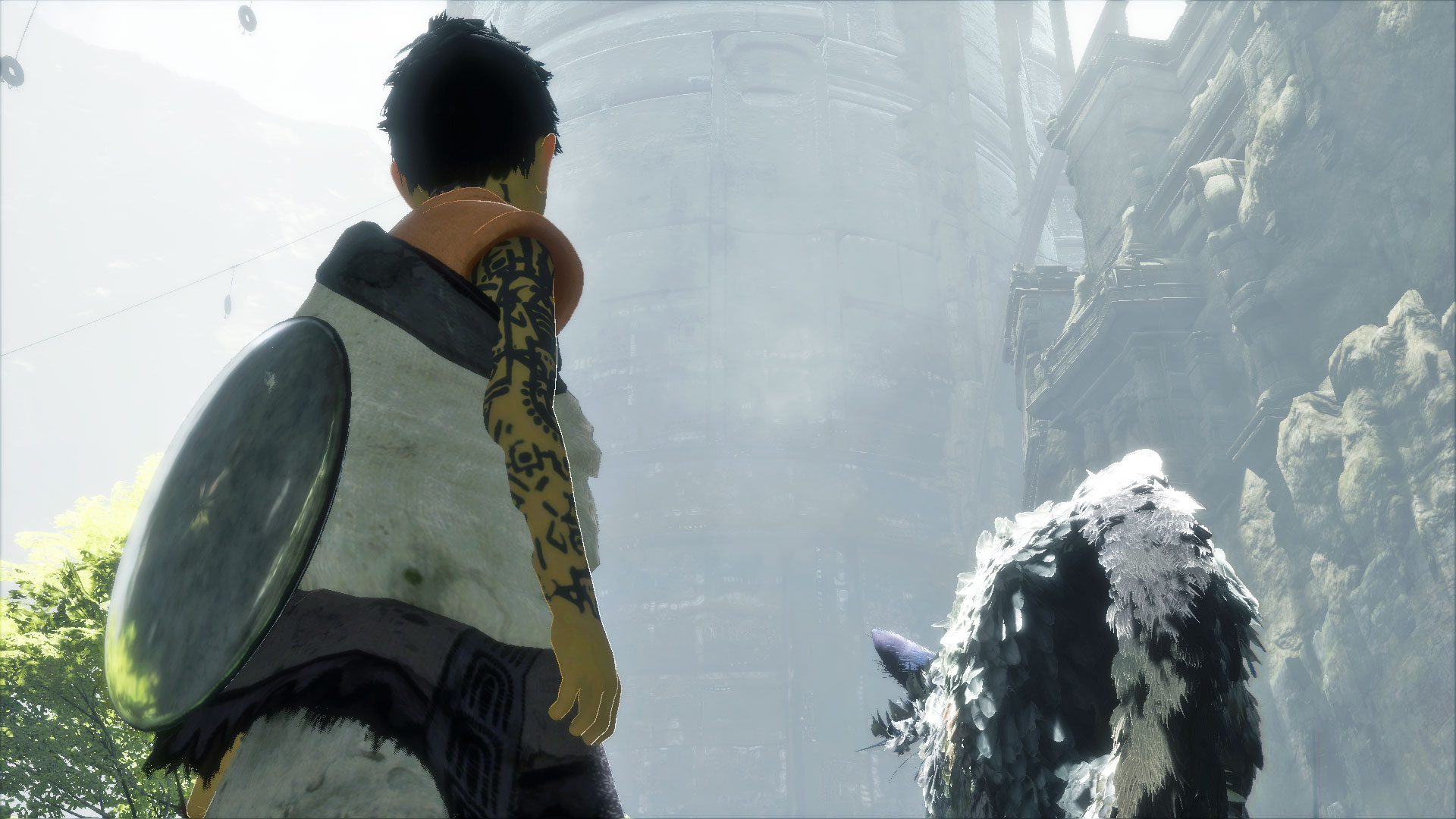Fear and faith: ‘The Last Guardian’ is an incomplete opus
“Yes, I worry. All I can do at this moment really is pray.”
Fumito Ueda has been working on The Last Guardian for almost 10 years, and in just four months time, it will be released on PlayStation 4. At E3 2016, Ueda showed me the fruits of his labor and shared his fears about the reaction to its eventual release on October 25th.
In The Last Guardian, you play as a young boy who wakes up in an unknown land next to a giant creature named Trico. The animal is mostly catlike in appearance but with mangled, shorn wings and a ratty tail. I played the first 40 minutes of the game, and it’s changed a fair amount from the section we saw last year.
The game starts by establishing its controls with on-screen prompts and begins to tell Trico’s story. Your first task, as in last year’s demo, is to remove the spears preventing Trico from moving. To do this, you need to begin to befriend the creature, feeding it barrels to satiate its hunger and build trust. With spears removed, you then set about freeing Trico from his chains, a feat that requires you to scale his furry, feathered torso and remove a collar from his neck.
Before The Last Guardian, Ueda worked on Ico and Shadow of the Colossus. Both were released on PlayStation 2 to critical acclaim, but they hail from a different time. And The Last Guardian does too. Work began on the game in 2007, the same year Uncharted, BioShock and Assassin’s Creed all debuted. Despite the fact that those series have spawned a combined 13 sequels, bringing all manner of advances and additions to their respective formulas, Ueda says his vision for The Last Guardian has not changed. Speaking through a translator, he noted that while “from a technical standpoint, the detail and amount of expression” may have changed due to the long development cycle, the game is “exactly what I had in mind with my vision.”
That vision still eludes me. The gameplay, from both the demo I went through and the various trailers over the years, is roughly divided between puzzle-solving and platforming. You utilize the two characters’ vast difference in stature to your advantage, crawling through gaps and cracks with the boy and reaching high above with Trico. But Ueda’s games have always focused on story as much as gameplay, and The Last Guardian concentrates on telling the animal’s story through its relationship with the boy.
Both Ico and Shadow of the Colossus deal with childhood, innocence, growth, nonverbal communication and bonds. The Last Guardian appears to explore similar notes, albeit in a new arrangement. The commonality is no accident, but Ueda says he doesn’t want to tell stories about these themes. Instead, he comes back to them because they allow him to best convey stories. The child, for example, mirrors the mindset of a player as she’s exploring a new world. The lack of dialogue allows for a wide range of interpretation among different gamers. He’s not crafting characters “to make 100,000 people to feel [a certain way]” but rather creating characters that will help 100,000 people feel whatever they want to feel.

Prior to the demo, and in my subsequent interview with Ueda, I saw the boy as the main character. That was wrong. While he is playable, Trico is our voiceless protagonist (when he opens his mouth, it’s only to emit a birdlike shriek). It’s through the two characters’ relationship that we get to know the creature and learn his story. Ueda spoke passionately about his creation, telling me that even in the team’s darker moments, “we just couldn’t forget about Trico. It’s something that we’ve created and we can’t forget, and we continue to pour our heart and soul into.”
And there must have been some truly dark times over the game’s development cycle. I asked Ueda how he and his team remained motivated, delay after delay. He pinpointed the release of PlayStation 3 versions of Ico and Shadow of the Colossus as pivotal in maintaining focus. When they were first released, “we were just on the brink of entering social media,” he explained, but by the time the HD remasters released, “there was a different feedback loop that we hadn’t experienced.” Hearing fans’ responses and seeing their delight in discovering the games “was a great positive factor for us” and spurred the team to continue its work, even when it became apparent that it would have to move development from PlayStation 3 to PlayStation 4.

I have no doubt that The Last Guardian will engender positive responses from fans. It was a true delight to discover the various mechanics of the game, so much so that I almost feel bad revealing them. There’s the color of Trico’s eyes, which changes with his mood, allowing you to learn what he’s thinking nonverbally. There’s a magical shield with which you can spur Trico to shoot lightning from his tail. There’s the narrator, ostensibly a grown-up version of the boy retelling the tale, who says what he did in order to guide you in the right direction. There’s the gorgeously exaggerated key frame animation of the boy as he creeps around in the darkness. It’s the most impressive tutorial I’ve ever played. By the end of the demo, the bond between the boy and Trico was only just beginning to form, but the bond between Trico and me was already strong.
By the end of the demo, the bond between the boy and Trico was only just beginning to form, but the bond between Trico and me was already strong.
That said, I have some concerns about The Last Guardian being ready by October. The game should be in the “refine for release” phase, but I noticed plenty of graphical glitches, awkward camera angles and even one instance where a jump that should’ve barely lifted me into the air propelled me 10 feet high.
To be clear, none of the issues detracted enough from the experience to make this anything other than the most memorable 30 minutes of my gaming year, but it’s still a worrying sign when we are this close to the release of a title that is so anticipated. Although Ueda and his team at genDESIGN remain the creative force behind the project, since the switch to PlayStation 4, Sony’s Japan Studio has been handling the technical side of the game. Perhaps the full force of that 400-strong team working to the deadline will be enough to give The Last Guardian the polish that fans are expecting.
Although social media has helped Ueda believe in the strength of his vision, its potential for negativity worries him as well. “Today, [social media] is maybe a little too much. Your harshest critics are also your biggest fans.” Combined with the extremely long development cycle, this has made Ueda tense about its October release. “Yes, I worry. All I can do at this moment really is pray,” he told me. Now it’s just a case of faith. “When I put my ideas on paper, I’m coming from my own player perspective. This is the type of game I want to play too. When the game comes out, all you can hope for is there are others who have the same passion and ideas that I have. That’s all I can hope for: That there’s a very wide range of players out there that can feel that.”
(77)




